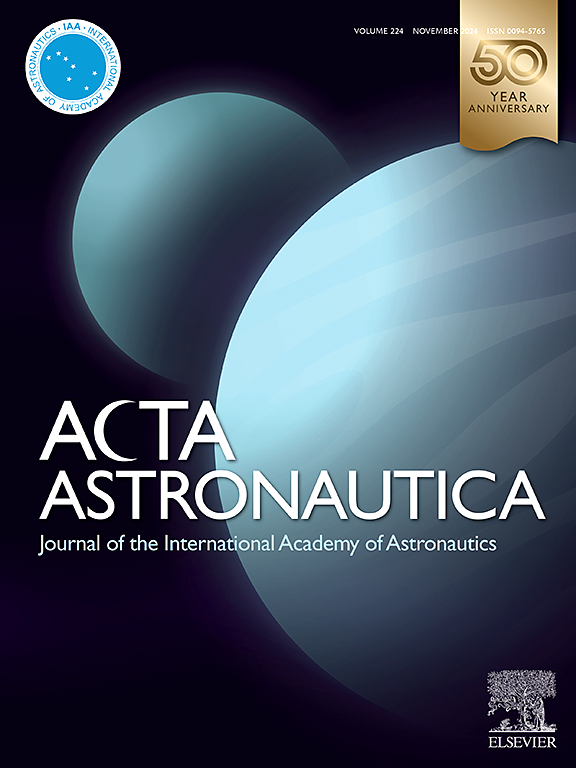月球风化层原位提取氧气的研究进展,重点是太阳热和激光真空热解
IF 3.1
2区 物理与天体物理
Q1 ENGINEERING, AEROSPACE
引用次数: 0
摘要
就地资源利用(ISRU)对于降低空间探索成本和维持人类在月球上的活动至关重要。从月球风化层中提取氧气的多种技术已被研究,包括熔融风化层电解和熔盐电解等电化学过程,以及氢和碳热还原等火法冶金过程。然而,一种有吸引力的技术仍未得到充分开发,即真空热解。这种方法利用高温和当地的真空条件,从由各种矿物组成的月球风化层中生产氧气。真空热解特别具有吸引力,因为它基于当地的月球资源,不需要外部消耗品,并且能够与任何月球土壤原料组成一起操作。在可能的高温能源来源中,激光和聚光太阳能是驱动月球吸热热解过程的合适选择。特别是,在月球表面使用广泛可用的太阳能作为过程热源,消除了从月球矿物中生产氧气和各种金属化合物的中间电力生产的需要。这篇综述文章汇编和审查了在这个ISRU过程中进行的各种工作,并进一步提供了未来在月球上应用的集成和自给自足的氧气生产过程的发展需要考虑的不同方面。本文章由计算机程序翻译,如有差异,请以英文原文为准。
Review of in-situ oxygen extraction from lunar regolith with focus on solar thermal and laser vacuum pyrolysis
In Situ Resource Utilization (ISRU) is crucial for lowering the cost of space exploration and sustaining human activity on the Moon. Multiple techniques have been studied to extract oxygen from lunar regolith, including electrochemical processes such as molten regolith electrolysis and molten salt electrolysis, as well as pyrometallurgical processes such as hydrogen and carbothermal reduction. However, one attractive technique remains underexplored, namely vacuum pyrolysis. This method utilizes high temperatures and benefits from local vacuum conditions to produce oxygen from lunar regolith composed of various minerals. Vacuum pyrolysis is particularly attractive as it is based on local lunar resources, it requires no external consumables, and it is capable to operate with any lunar soil feedstock composition. Among the possible sources of high-temperature energy, laser and concentrated solar energy are suitable options to drive the endothermal pyrolysis process on the Moon. In particular, using widely available solar energy as process heat source on the lunar surface eliminates the need for intermediate electrical production for the production of oxygen and various metallic compounds from lunar minerals. This review article compiles and examines the various works carried out on this ISRU process, and further provides different aspects to be considered for the development of an integrated and self-sufficient oxygen production process for future applications on the Moon.
求助全文
通过发布文献求助,成功后即可免费获取论文全文。
去求助
来源期刊

Acta Astronautica
工程技术-工程:宇航
CiteScore
7.20
自引率
22.90%
发文量
599
审稿时长
53 days
期刊介绍:
Acta Astronautica is sponsored by the International Academy of Astronautics. Content is based on original contributions in all fields of basic, engineering, life and social space sciences and of space technology related to:
The peaceful scientific exploration of space,
Its exploitation for human welfare and progress,
Conception, design, development and operation of space-borne and Earth-based systems,
In addition to regular issues, the journal publishes selected proceedings of the annual International Astronautical Congress (IAC), transactions of the IAA and special issues on topics of current interest, such as microgravity, space station technology, geostationary orbits, and space economics. Other subject areas include satellite technology, space transportation and communications, space energy, power and propulsion, astrodynamics, extraterrestrial intelligence and Earth observations.
 求助内容:
求助内容: 应助结果提醒方式:
应助结果提醒方式:


